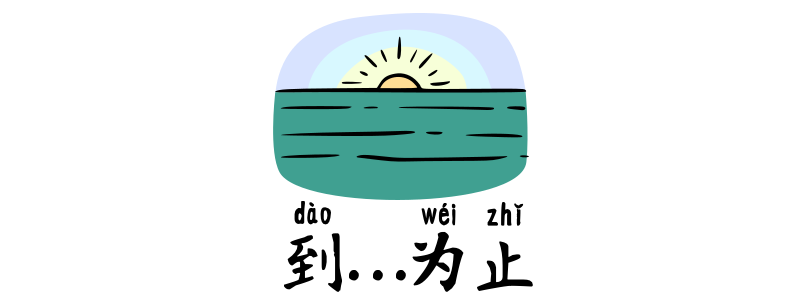Grammar Point:
到 dào… 为止 wéizhǐ is a common structure for expressing ‘until’ in Chinese. Unlike English, where ‘until’ is a single word, Chinese uses 到 dào as a starting marker and 为止 wéizhǐ as an endpoint, framing the time, condition, or event.
Structure
到 dào + Time/Event/Action + (为止 wéizhǐ)
为止 wéizhǐ is optional, but adding it makes the expression more formal and emphasizes the endpoint of the action, especially in written or official contexts.
到目前為止,我們已經完成了80%的工作到目前为止,我们已经完成了80%的工作
Until now, we have completed 80% of the work.
這次活動會持續到下個月為止这次活动会持续到下个月为止
This event will last until next month.
你需要每天學習,直到你考過HSK6為止你需要每天学习,直到你考过HSK6为止
You need to study every day until you pass HSK6.
我會在這裡等到天黑為止我会在这里等到天黑为止
I will wait here until it gets dark.
她會一直嘗試到成功為止她会一直尝试到成功为止
She will keep trying until she succeeds.
他會堅持到找到答案為止他会坚持到找到答案为止
He will persist until he finds the answer.
我會愛你愛到生命結束為止我会爱你爱到生命结束为止 😎
I will love you until my life ends.
Common Phrase
到此为止 dàocǐwéizhǐ
到此为止 dàocǐwéizhǐ is a fixed expression meaning “to stop here”, “to end at this point”, or “no further”. It emphasizes that something will not continue beyond this moment.
我們的合作就到此為止吧我们的合作就到此为止吧
Our cooperation ends here.
你們不要再吵了,這件事到此為止!你们不要再吵了,这件事到此为止!
Stop arguing! This matter ends here!


